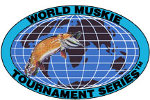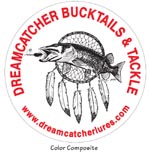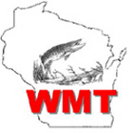
Butternut Lake
Phillips Chain
Pike Round Chain
Butternut Lake
The best way to describe muskie fishing in Butternut Lake is "you can't make a bad cast". The lake is 1006 acres, 32' deep and chock full of muskie habitat. Most of Butternut's shoreline have cabbage, coontail, lily pads or other pond weeds, providing excellent cover and ambush areas for hungry muskies. In the few areas that don't have some sort of aquatic vegetation, you have rocky points that will also hold fish or at least temporarily occupy traveling muskies. There are also plenty of bays, both east and west, north and south to occupy an angler all day long. Rock humps, especially on cloudy days, are also an area to bump into a muskie or two. It is important to note that most Butternut Lake rock humps are not on any maps, so a little bit of scouting is needed to locate them.
A tip to finding rock humps is to watch the walleye anglers who drift the humps or anchor on them. Butternut Lake has a huge population of walleyes, and walleye anglers are not in short supply here. There are plenty of pan fishermen also, due to Butternut's great crappie and perch fishery. Many of the pan fishermen will show you where to locate the numerous fish cribs scattered throughout the lake.
Even though Butternut Lake muskie population is considered by the WDNR to be abundant, fine tuning your lure presentations is important when you wish to make contact with these toothy critters. In spring, smaller bucktails and jerk baits work the best. Try a perch or fluorescent colored jerk bait and a bucktail with a brass blade. Butternut's dark water tends to warm up quickly and places to encounter muskies would be at or near the mouth of creeks flowing into the lake or in the many shallow bays. Topwater baits can be used right from the get-go, but they are best when used in the evening when the heat of the day has warmed up the waters and the muskies attitude.
In summer, many muskies on Butternut Lake can be found at the mouth of the creeks and in the bays, but now the big girls are hanging around the mid lake humps, the weed beds around the island and on the many points. Big jerk baits and topwater lures are outshining all other lures but crank baits and spinners are still effective. Bumping the fish cribs with jig and plastic, safety pin style spinners or deep diving crank baits can also pay off big.
In the fall, Butternut Lake provides two fishing patterns for the muskie angler. One technique is to keep your boat in the 11' range while fishing a sucker on a quick strike rig and casting towards the shore with large jerk baits and 8"-10" crank baits, slowly twitched. The other being keep your boat positioned on the deep break line with suckers dragging bottom, casting jig and plastic combos and weighted deep diving crank baits.
Phillips Chain
The Phillips chain of lakes is one of the best kept secrets in the northwoods
for catching muskies. The locals have known for decades the lakes
abilities to produce numbers of muskies and big fish, but it is
only until recently that the word has been getting out about the
chains productive muskie fishery. For half of a century, the Phillips
chain has been a go-to lake for area guides to guarantee their clients
a successful fishing trip.
The four lakes of Duroy, Elk, Long and Wilson, along with the Elk
river that connects them, make up the Phillips chain. The water
here is coffee stained, 1236 acres and 54 feet at its deepest. Although
a good number of anglers pursue muskies here, walleye, crappie and
bass angling receives a great amount of attention.
Spring is one of the best times of the year to really score on a
big fish and to catch great numbers. The dark waters warm quickly
in the spring sun and the muskie action keeps in step with heated
activity. Lake Duroy's expansive shallow weed flats on the west
side is the first location on the chain to produce, but the whole
chain quickly follows suit, especially on the abundant weedy shorelines
of Wilson lake. Perch and sucker colored jerk baits, along with
small bucktails with a silver blade work well here in early in the
season. Although the water can have a little chill early in the
morning, as the temperatures rise and the sun begins to dip into
the western sky, a slow moving top water bait can be very productive
here, even though it's early in the season.
As the season progresses into summer, many of the Phillips chain
muskies are found along the outside weed edges and on Duroy's large
weed flat. Numerous rock humps, many of which are not found on maps,
can also produce some of the largest muskies. Chartreuse and orange
colored jerk baits and crank baits work well now in the chain's
darkening summer waters, however perch colors should still be in
your arsenal. Crank baits should be worked in a steady retrieve,
with just a few subtle twitches used. At this time, bucktails should
be switched to fluorescent colors and also copper blades; however,
muskies here get real color selective and changing color combinations
to find the right combo can make all the difference in scoring on
fish.
In the cooling waters of fall, it is hard to find healthy aquatic
plants, so sharp breaks, rock humps and the old river channel are
keys to locating muskies. Big jerk baits casted around rock humps
are just the ticket to connect on the chain's fall muskies. Large
suckers on quick strike rigs, fished on the sharp breaks and old
river channel can produce some whoppers!
Pike Round Chain
The Pike/Round Lake chain is one of the best kept secrets in the northwoods. Halfway
between Park Falls to the west and Minocqua to the east, the chain
gets most of its fishing pressure from local anglers. It is also
a favorite destination for local guides to bring their clients to
fish its diverse fishery of muskies, walleye, crappies, perch, large
and smallmouth bass, and northern pike.
The chain consists of five lakes: Pike, Round, Amik, Turner and
the fifth, Tucker, is only accessible by portaging a boat through
the Chequamegon National Forest from Round Lake. The chain's 2023
acres and 32 foot hole in Tucker Lake can produce numbers of muskies,
but also large fish are caught or seen here with regularity. Muskie
growth rates in length and weight is above average due to good genetics
and an abundance of prey. Perch, sucker and various minnow species
make up most of the muskies forage on the chain.
Spring fishing on the Pike/Round Lake chain turns on early in the
season. With its relatively shallow depths and its dark stained
waters, the lake water temperatures warm up quickly and the action
can be hot right off the bat. Small #5 silver-bladed bucktails dressed
in black, purple or brown hair in low light conditions, and white,
yellow or chartreuse hair on those sunny days. Smaller six inch
jerk baits and crank baits in a perch, sucker or chartreuse color
are highly productive in the early season. Because of the chain's
water temperature rise so quickly in the spring, topwater lures
are very effective after the opening whistle of the season. Amik
and Turner turn on the quickest, along with the north and south
end of Pike Lake. Cast your lures over the tops of newly emerging
aquatic vegetation.
In the summer, some of the resident muskies will transition themselves
from the shallow, weedy bays out to the main lake rock and weed
points, rock humps and around the island cluster on Pike Lake. At
this time, change your bucktail blade selection to brass or fluorescent,
hair color according to the weather conditions and muskie preferences.
When July arrives, start tossing larger jerk baits and cranks in
the same colors as spring, but add blaze orange and yellow to your
arsenal. Topwater should continue to be used up until the end of
the season.
Fall action on the Pike/Round Lake chain can be the best of the
year, which is why you will see many of the local guides slowly
row-trolling suckers on quick strike rigs for their clients. Big,
weighted jerk baits and suckers should be worked around the many
rock humps, steep breaks and around the many fish cribs placed by
the DNR and lake association.










